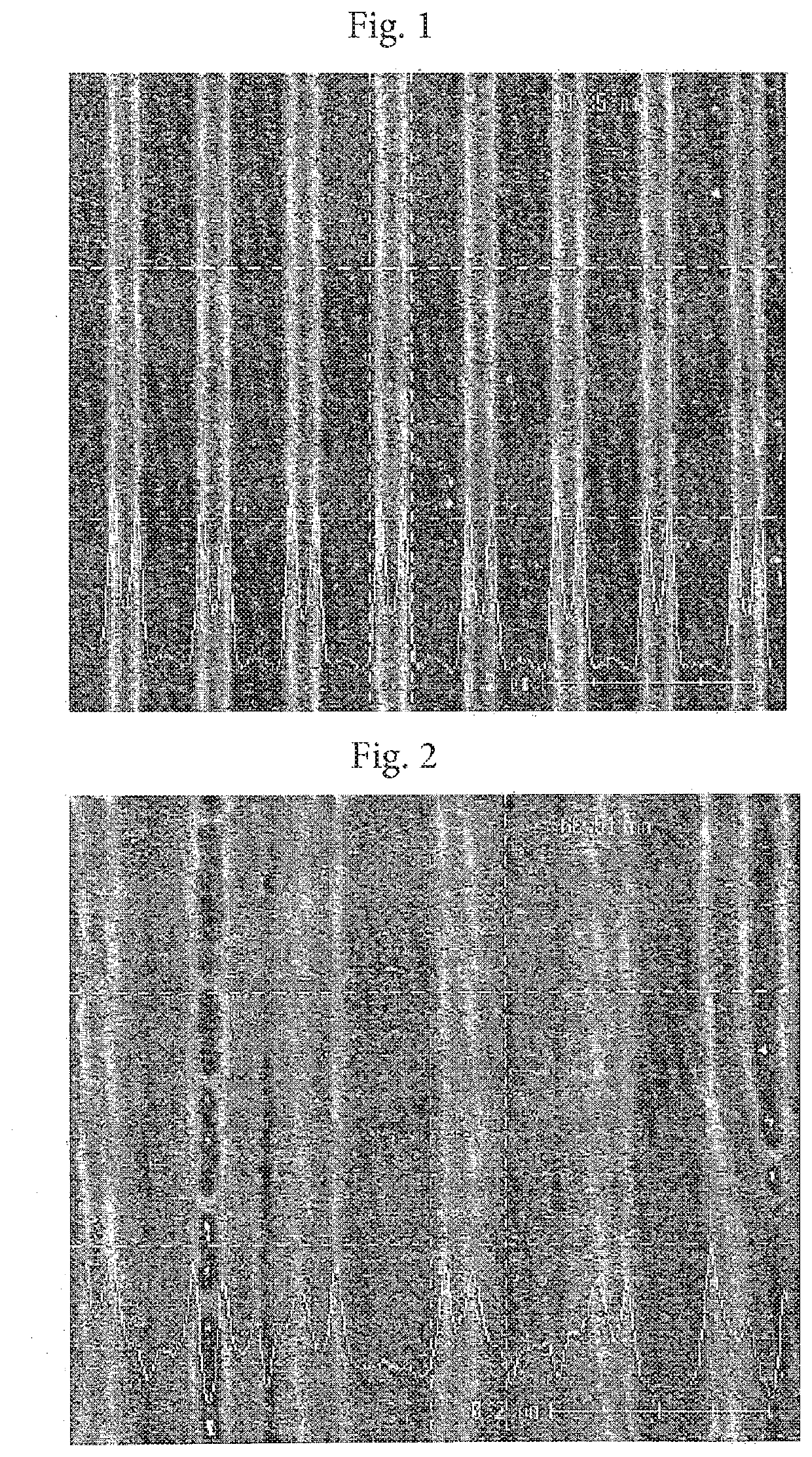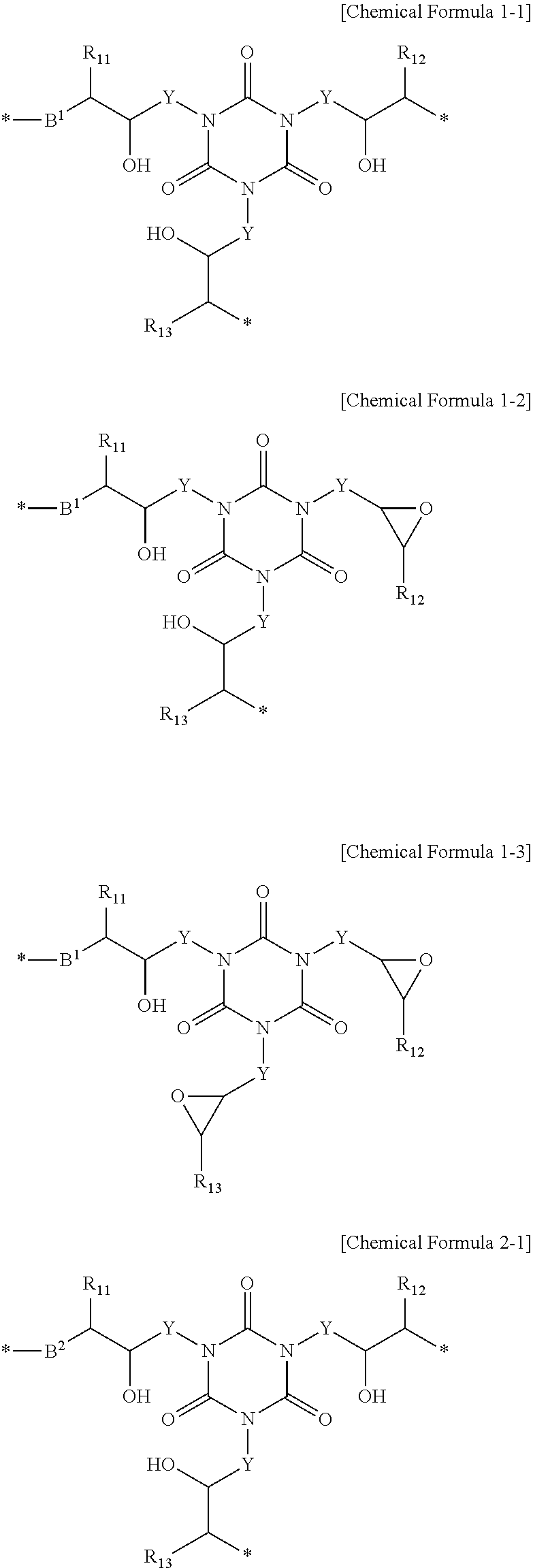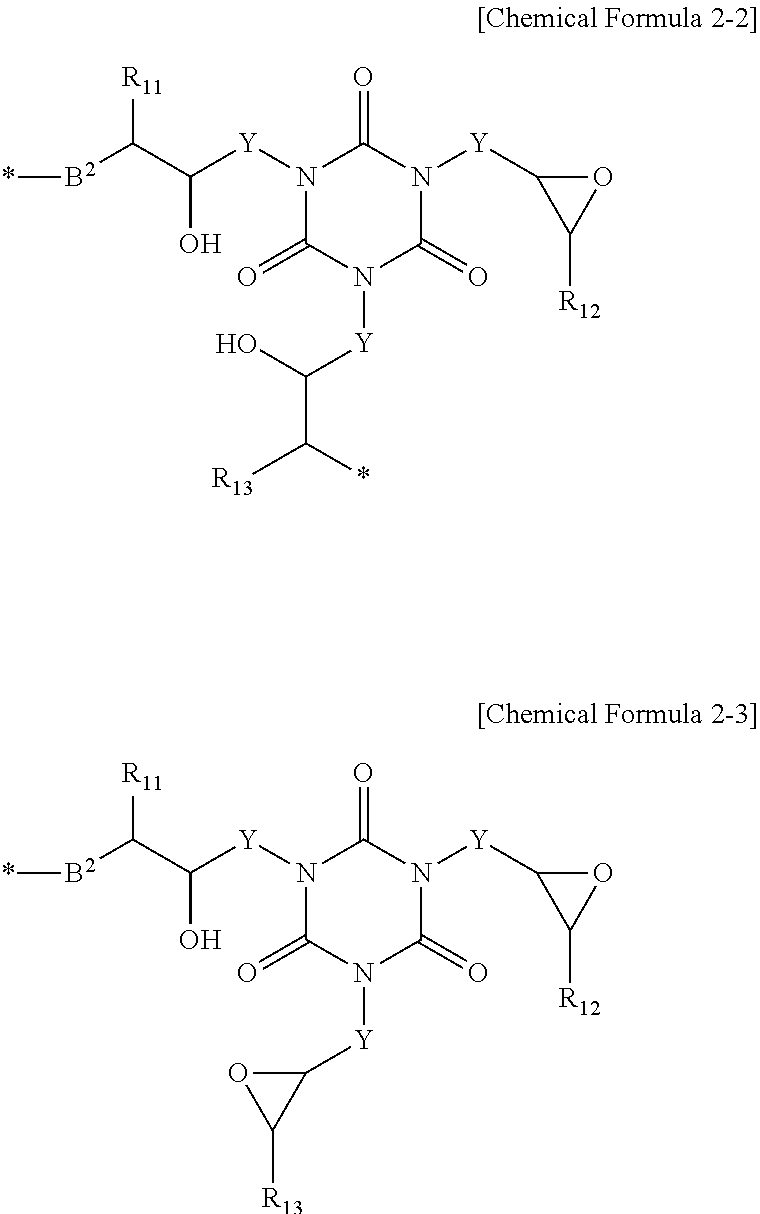Polymer for Organic Bottom Anti-Reflective Coating and Bottom Anti-Reflective Coating Composition Containing the Same
a technology of anti-reflective coating and polymer, which is applied in the direction of anti-reflective coating, photomechanical equipment, instruments, etc., can solve the problems of poor pattern profile, difficult to remove, and lowered uniformity, and achieve excellent etching rate, high dry etching rate, and high etching rate
- Summary
- Abstract
- Description
- Claims
- Application Information
AI Technical Summary
Benefits of technology
Problems solved by technology
Method used
Image
Examples
preparation example 1
[0158]
[0159]To a flask, 54 g of bis(2-carboxylethyl)cyanuric acid, 2.3 mL of sulfuric acid, and 250 mL of methanol were added, and the mixture was heated to 65° C. and stirred for 3 hours. After completion of the reaction, the reaction mixture was cooled to 0° C. The resulting solid was filtered, washed with methanol, and dried to obtain 55 g of bis(2-carboxylethyl)cyanuric acid dimethyl ester.
preparation example 2
[0160]
[0161]To a flask, 30 g of bis(2-carboxylethyl)cyanuric acid dimethyl ester prepared in Preparation Example 1, 18 g of calcium carbonate, 14 g of 1-iodinated methane, and 150 mL of acetonitrile were added, and the mixture was heated to 70° C. and stirred for 20 hours. After the reaction was completed, the reaction mixture was cooled to room temperature, and the organic layer was washed once with water. After concentrating the reaction solution through distillation under reduced pressure, 210 mL of 6N hydrochloric acid was added, the mixture was heated to 100° C., and stirred for 20 hours. After completion of the reaction, the reaction product was cooled to room temperature, and the resulting solid product was filtered, washed with water, and dried to obtain 22 g of methyl bis(2-carboxylethyl)cyanuric acid. HPLC analysis showed that the monomer had purity of >98%, and the final structure was confirmed by 1H, 13C NMR.
[0162]1H NMR (500 MHz, DMSO-d6) δ 2.50 (t, J=7.0 Hz, 4H), 3.16 ...
preparation example 3
[0163]
[0164]To a flask, 40 g of bis(2-carboxylethyl)cyanuric acid dimethyl ester prepared in Preparation Example 1, 25 g of calcium carbonate, 30 g of 1-iodobutane, and 280 mL of acetonitrile were added, and the mixture was heated to 70° C. and stirred for 20 hours. After the reaction was completed, the reaction mixture was cooled to room temperature, and the organic layer was washed once with water. After concentrating the reaction solution through distillation under reduced pressure, 210 mL of 6N hydrochloric acid was added, the mixture was heated to 100° C., and stirred for 20 hours. After completion of the reaction, the reaction product was cooled to room temperature, and the resulting solid product was filtered, washed with water, and dried to obtain 34 g of butyl bis(2-carboxylethyl)cyanuric acid. HPLC analysis showed that the monomer had purity of >98%, and the final structure was confirmed by 1H, 13C NMR.
[0165]1H NMR (500 MHz, CDCl3) δ 0.95 (t, J=7.5 Hz, 3H), 1.35-1.38 (m, 2...
PUM
| Property | Measurement | Unit |
|---|---|---|
| contact angle | aaaaa | aaaaa |
| refractive index | aaaaa | aaaaa |
| refractive index | aaaaa | aaaaa |
Abstract
Description
Claims
Application Information
 Login to View More
Login to View More - R&D
- Intellectual Property
- Life Sciences
- Materials
- Tech Scout
- Unparalleled Data Quality
- Higher Quality Content
- 60% Fewer Hallucinations
Browse by: Latest US Patents, China's latest patents, Technical Efficacy Thesaurus, Application Domain, Technology Topic, Popular Technical Reports.
© 2025 PatSnap. All rights reserved.Legal|Privacy policy|Modern Slavery Act Transparency Statement|Sitemap|About US| Contact US: help@patsnap.com



